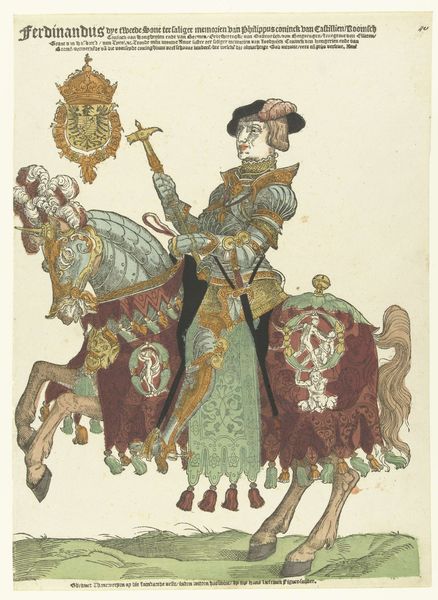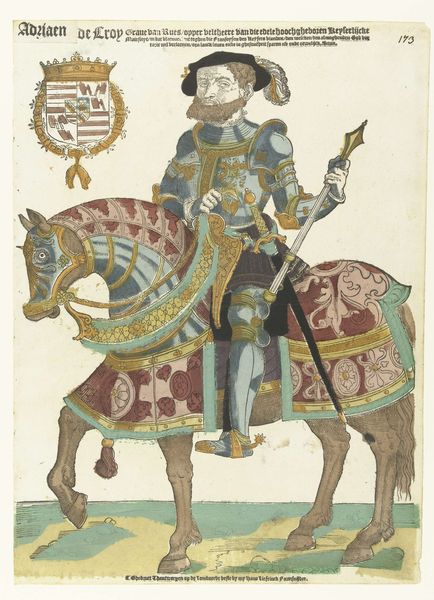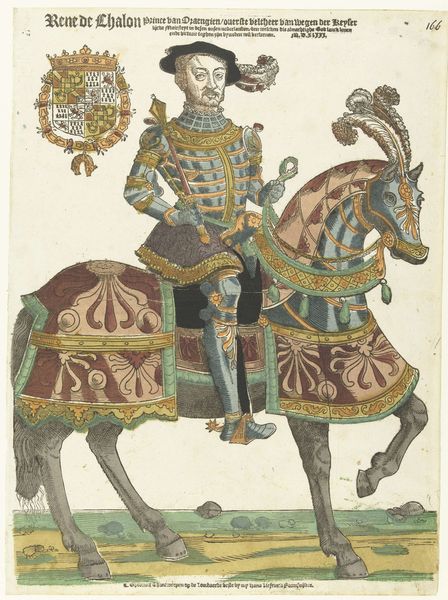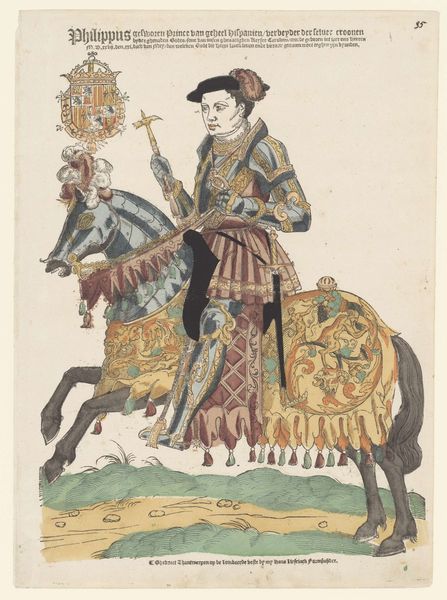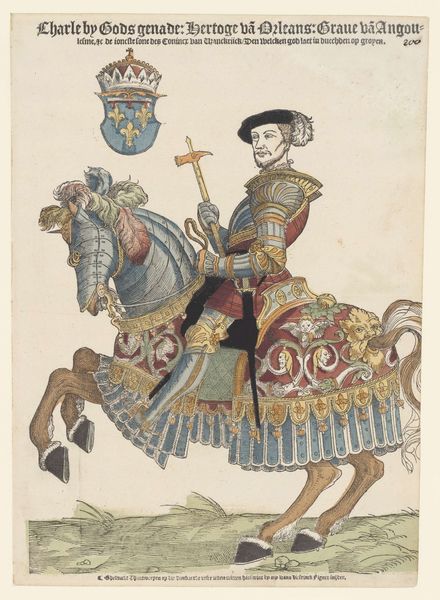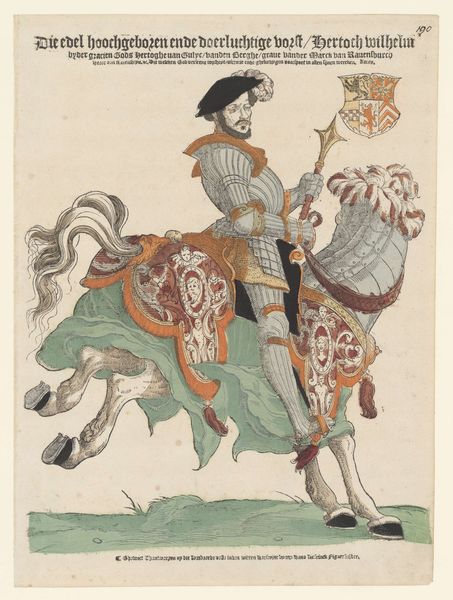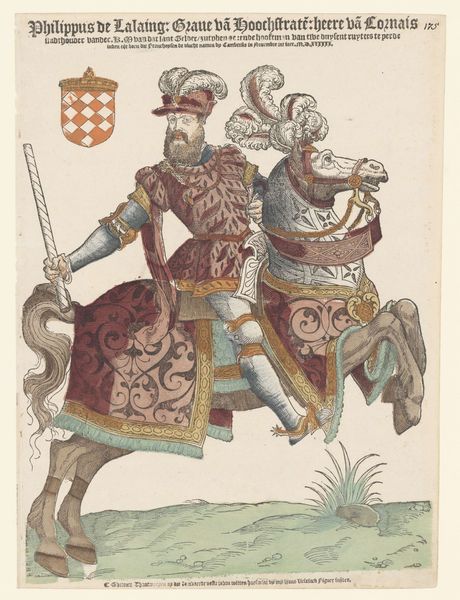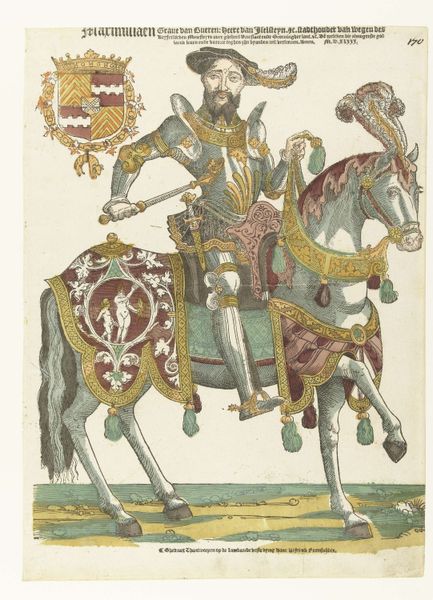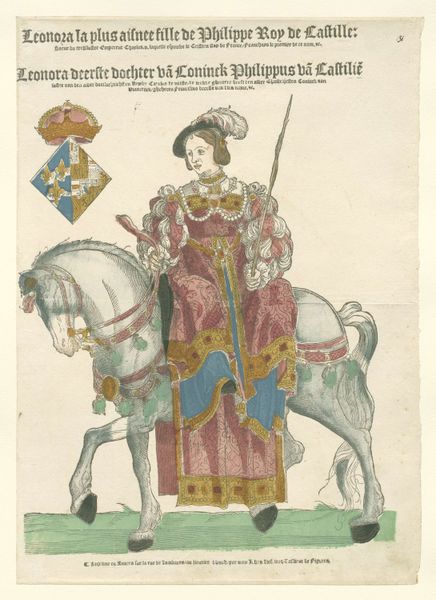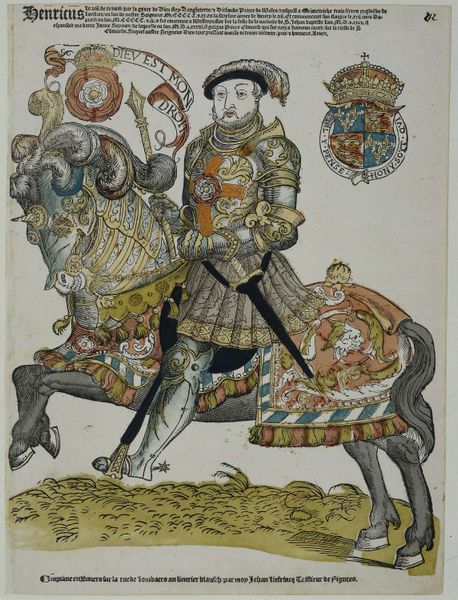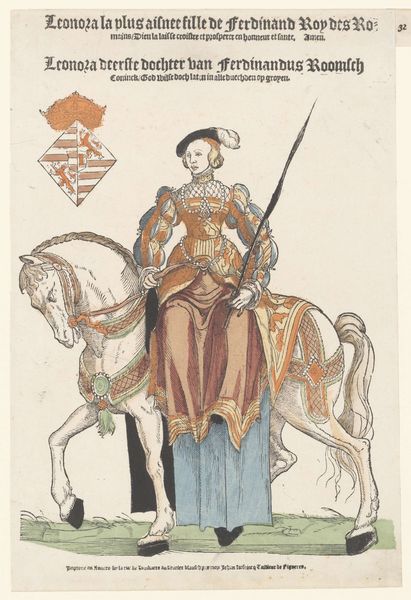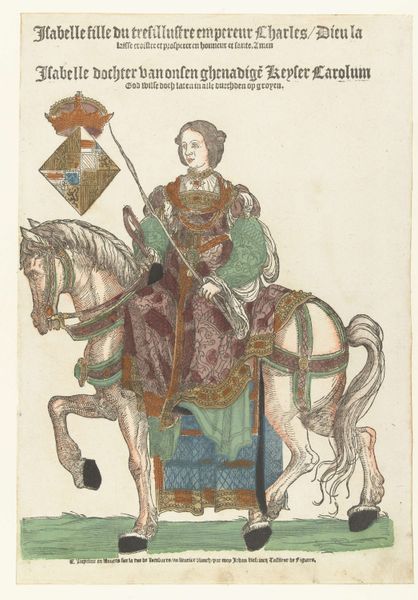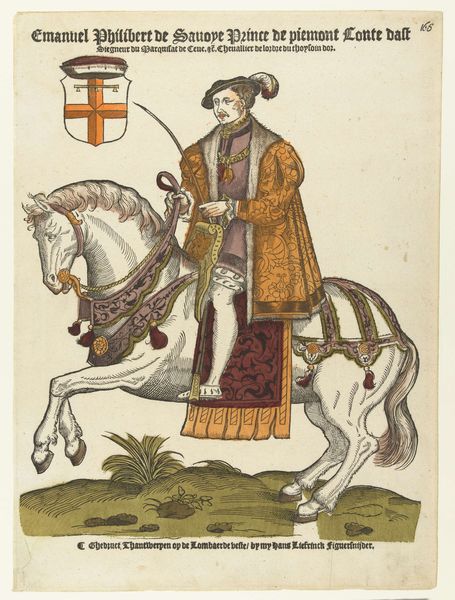
print, engraving
#
portrait
# print
#
history-painting
#
northern-renaissance
#
engraving
Dimensions: height 406 mm, width 300 mm
Copyright: Rijks Museum: Open Domain
This woodcut portrays Henry VIII of England, made by Cornelis Anthonisz. The imagery here is rich with symbols of power and lineage. Observe the royal coat of arms and the three lions emblazoned on the horse's drapery, a display of might and royal authority. The figure of a ruler on horseback goes back to ancient equestrian statues. Equestrian statues were typically intended to project authority and demonstrate the ruler’s power and control. Similarly, portraits of monarchs on horseback have historically served as propaganda. Consider the mace held by Henry, a symbol of authority and justice, akin to the scepter. Its evolution stretches back to ancient Egypt, where it was used as a weapon and later transformed into a symbol of royal power. This emblem, charged with a complex history of subjugation and authority, represents a powerful, almost primal engagement with leadership. These symbols, charged with a potent emotional and psychological impact, have evolved through the annals of time, resurfacing in different guises to assert authority, loyalty, and identity.
Comments
No comments
Be the first to comment and join the conversation on the ultimate creative platform.
